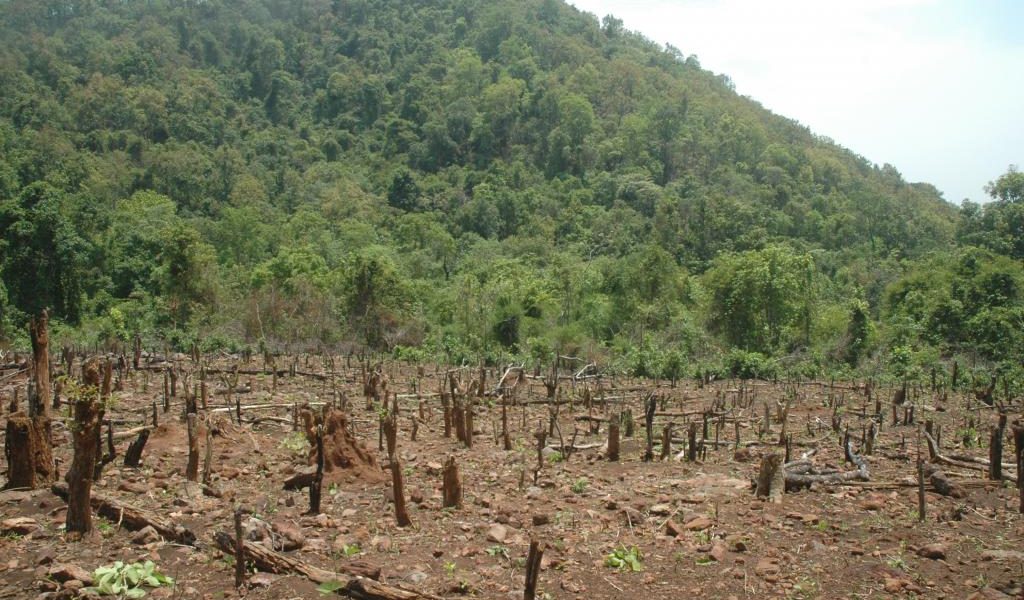In the first part of this blog post (can be found here.), we saw that the recent SCOTUS ruling in the Sackett Case and India’s Forest Conservation Amendment Bill indicate a trend toward deregulation, favouring private property rights over environmental concerns. This approach, while potentially aiding economic development, raised serious concerns about ecological and social consequences, echoing historical lessons from the United States. The second-part of this blog series focuses on the impact of the Amendment on rights of vulnerable tribal groups and wildlife and calls for a balanced approach.
ERASURE OF COMMON PROPERTY FOREST LANDS
While the Government had sought to balance private interests and community interests through the introduction of laws like the Forest Rights Act, 2006 and the Panchayat Extension to Scheduled Areas Act, 1996, it has undone that by weakening the rights of the forest dwelling tribal communities over common property forest lands. The proposed land on which the government wants exemption through amendment, the potential beneficiaries have land rights on the forests as per FRA of 2006. The Bill does not mention the consensus or permission being sought from the Village Committee for the same. It seems that the government wants to keep a big chunk of land away from the clearance process, impinging on the rights of forest dwellers. While the Bill seeks to exempt deemed forest, it is noteworthy that the tribals and the aboriginal forest dwellers have their land rights as per the FRA, 2006. This implies that once the clearance process is removed from the FCA, government will not be bound to take permission from the Village Committee.The government can give contract to any private company and can settle them on that land.
The negative repercussions of the Bill are not restricted to vulnerable communities. It goes a step further to destroy the natural habitat of wildlife. The Bill seeks to replace some critical habitats with ex-situ conservation sites like zoos and safaris. It allows zoos and safaris within the scope of non-forest activities- making it easy to commercialise forest and render wildlife vulnerable. Rich ecosystems, also vast areas unscientifically graded as wastelands in India, might soon end up becoming zoos.This deregulatory approach essentially encourages caging wildlife instead of roaming around free in their natural habitats.
The proposed legislation may also have consequences for wildlife corridors. For example, an infrastructure initiative such as the construction of a new highway could potentially disrupt a designated wildlife corridor that links protected regions. Such interference could lead to the fragmentation of the corridor, putting species at risk by diminishing genetic diversity, elevating the chances of collisions, disrupting vital ecosystem functions, and contributing to a decline in the biodiversity.
The construction could also potentially modify the courses of water and the patterns of drainage, with potential consequences for water resources, aquatic biodiversity, and communities downstream. Although the Bill’s provisions may speed up development, they carry the risk of causing irreversible damage to critical ecosystems and the survival of various species, emphasizing the need to strike a balance between economic interests and environmental preservation.
BALANCING PUBLIC AND PRIVATE INTERESTS
Exemptions under the Bill could lead to unchecked exploitation of forest resources and ecological damage. Fulfilling aspirations of development and bolstering national security are important goals, but so is safeguarding India’s ecological heritage and biodiversity. In order to carry out this balancing act, certain provisions for check and balances must be incorporated in the Forest Amendment Bill, 2023. It is crucial to implement a robust system of environmental impact assessments (EIA) for all initiatives involving private corporations. This will help evaluate the potential ecological consequences of projects and ensure that appropriate mitigation measures are in place.A clause should be inserted as per which any initiative that a private corporation seeks to undertake must undergo an EIA.
Further, it is important to establish comprehensive monitoring mechanisms to track the ecological impact of development projects over time. Regular assessments and reporting can help identify and address issues as they arise. Local communities, especially forest dwellers and tribal groups, can play an imperative role in decision-making processes regarding land use and conservation efforts.
The government could also explore alternative financing methods such as sustainability bonds or funds The Tropical Landscape Finance Facility (TLFF) following in the steps of the Indonesian Government. TLFF issues corporate sustainability bonds, the proceeds from which are used to finance the production of sustainable natural rubber. Such an initiative could help maintain the ecological balance of the land. The Bill in its current form appears a favour to crony capitalism. What is crucial is that the government balance private and public interest in environment rule-making, lest the interests of several stakeholders, including the future generations should be compromised substantially.
The author is a second-year law student at NLSIU Bangalore.
[Ed Note: This Article has been edited by Sohina Pawah and published by Harshitha Adari from the Student Editorial Team.]






[…] Posted byOorja Newatia […]